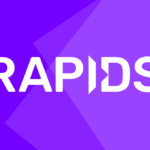The explosive growth of AI has led to an equally intense surge in data complexity. Traditional tabular databases fall short when faced with multimodal data—think images, videos, audio, embeddings, and more. LanceDB emerges as a robust, developer-friendly, open-source database that bridges this gap, enabling AI developers to effortlessly manage and analyze large-scale multimodal data. Here’s a deep dive into what makes LanceDB unique, how it works, and why it’s a compelling choice for modern AI applications.
What is LanceDB?
LanceDB is an open-source database designed to handle the complexities of multimodal and unstructured data at scale. It’s already being used by innovative companies like MidJourney and Character.AI for AI-powered applications.
LanceDB combines the simplicity of file-based databases like SQLite with the ability to handle advanced AI workloads, including vector search and retrieval-augmented generation (RAG). With LanceDB, developers can manage embeddings, videos, PDFs, and other non-tabular data seamlessly while benefiting from integrations with tools like Pandas, PyTorch, and DuckDB.
Core Features
- Multimodal Data Support
- Easily manage embeddings, images, videos, PDFs, and more.
- Query both structured metadata and unstructured data efficiently.
- Developer-Friendly APIs
- Python-first approach with support for both synchronous and asynchronous operations.
- Pedantic model integration for schema management and validation.
- Rust-Powered Performance
- LanceDB leverages Rust for safe, high-performance data operations.
- Native GPU support accelerates vector indexing for massive datasets.
- Open-Source and Extensible
- Built on the Apache Arrow standard, ensuring compatibility with modern data tools.
- Open-source format encourages community contributions and transparency.
When to Choose LanceDB
LanceDB is ideal for scenarios where traditional databases like SQLite or PostgreSQL fail to scale or handle unstructured data effectively. Consider LanceDB if:
- Your Data Includes Multimodal Formats: Perfect for datasets that combine embeddings, images, and text.
- You Need Prototyping Flexibility: Start small with an embedded file-based setup and scale seamlessly to cloud or enterprise solutions.
- Performance is Critical: GPU-accelerated indexing and columnar storage make it a great choice for large-scale AI applications.
- Integration is Key: Works well with Python, DuckDB, PyTorch, and even tools like Hugging Face models.
How LanceDB Works
Quick Setup Install LanceDB via pip:
pip install lancedb Connect to a local database:
import lancedb db = lancedb.connect('data/sample.lance')Schema Definition and Data Ingestion Use Pandas or Pydantic to define schemas and add data:
from pydantic import BaseModel
class Item(BaseModel):
name: str
price: float
embedding: list[float]
db.create_table("items", schema=Item)
db["items"].add([Item(name="apple", price=0.5, embedding=[0.1, 0.2])])Efficient Queries Perform vector search and metadata queries effortlessly:
results = db["items"].search([0.1, 0.2]).limit(5).to_pandas()
print(results)Embedding Generation Automate embedding creation with built-in integrations:
from lancedb.embeddings import OpenAI
embedding_func = OpenAI(api_key="your-key").text_embedding
db.create_table("documents", schema={"text": str, "embedding": embedding_func})
db["documents"].add([{"text": "Hello, AI world!"}])Enterprise Features
For production workloads, LanceDB Enterprise offers:
- Distributed Architecture: Designed for massive scale with compute-storage separation.
- Cloud and On-Prem Options: Seamlessly integrate with S3, MinIO, or private cloud storage.
- Advanced Indexing: GPU-accelerated indexing for billions of vectors.
Why LanceDB?
LanceDB fills a critical gap in the AI ecosystem by enabling efficient, scalable management of multimodal data. Its ability to combine Python’s simplicity with Rust’s performance makes it an excellent choice for both prototyping and production-grade AI applications. Whether you’re building an AI-powered search engine, autonomous vehicle solutions, or unstructured data lakes, LanceDB offers a flexible and robust foundation.
Conclusion
In an era where AI and multimodal data dominate, LanceDB provides the perfect balance of developer-friendliness, scalability, and performance. With its open-source roots and enterprise-grade features, LanceDB is poised to become a cornerstone for AI-driven applications.





Leave a Reply